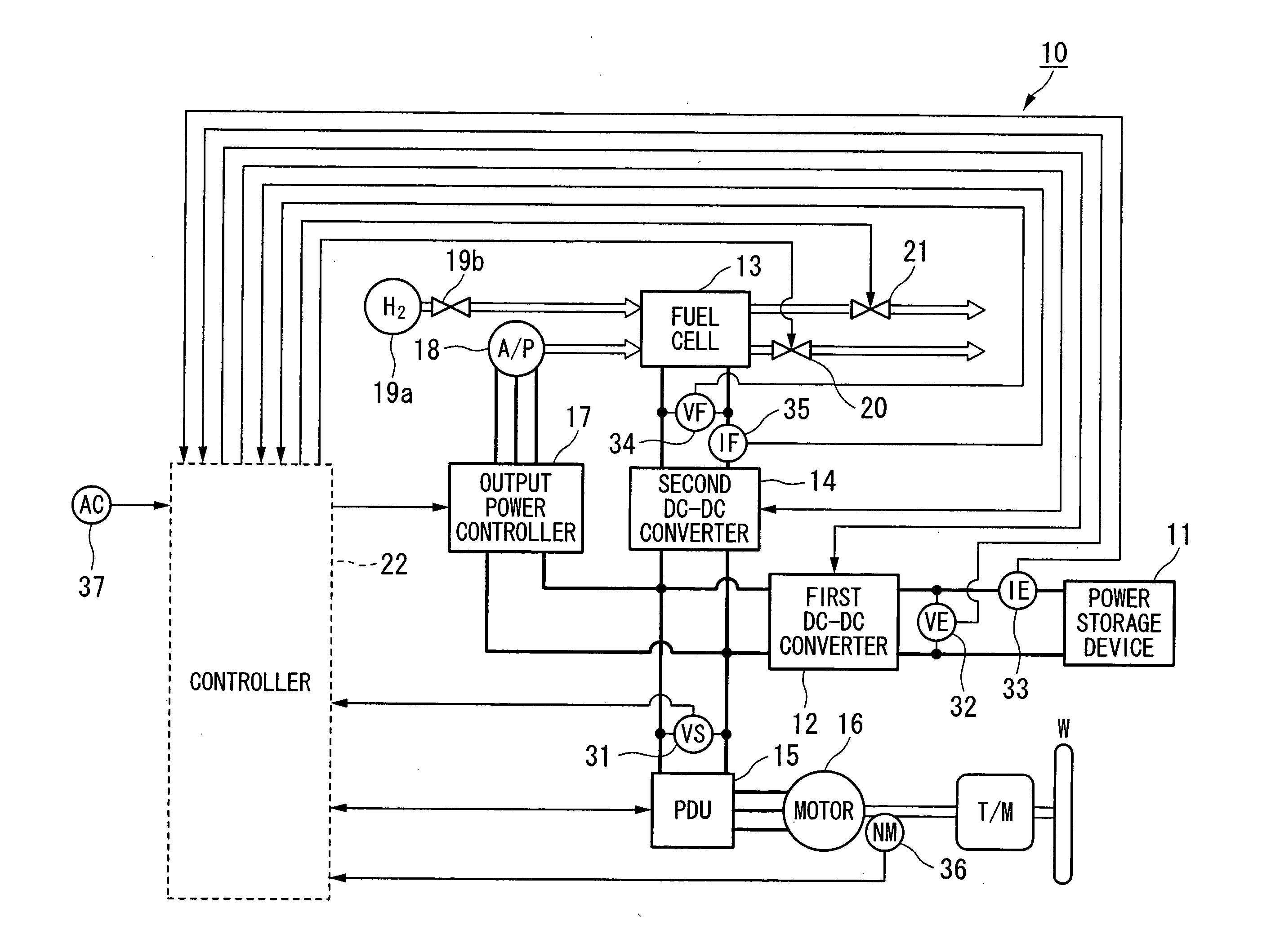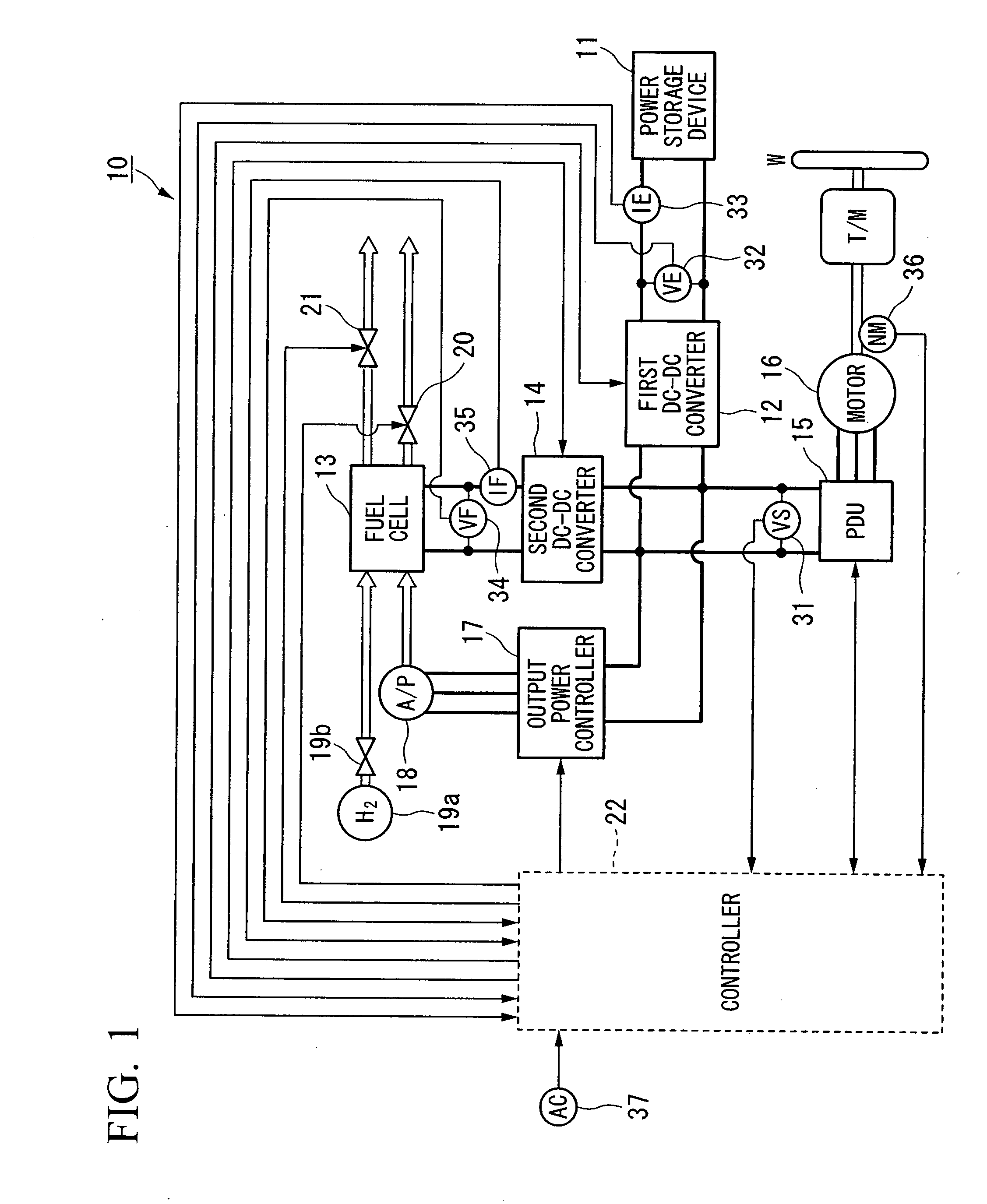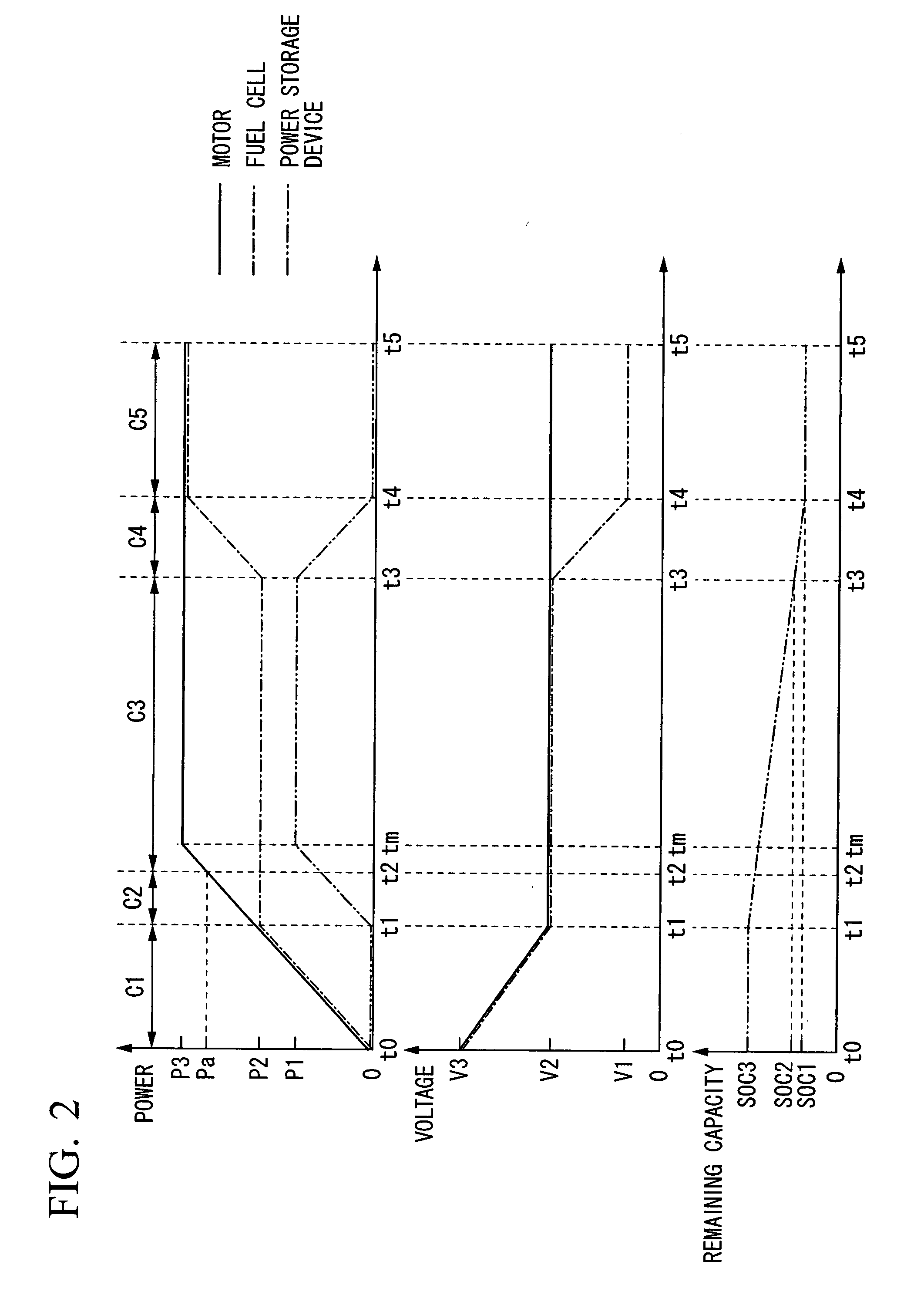Control method for fuel cell vehicle, and fuel cell vehicle
a fuel cell and control method technology, applied in the direction of battery/fuel cell control arrangement, cell components, instruments, etc., can solve the problems of difficult to secure desired output power, difficult to appropriately change the ratio between the output power input from the fuel cell into the converter of the power converter, and the output power input from the secondary battery into, so as to prevent problems such as deterioration of the power storage device
- Summary
- Abstract
- Description
- Claims
- Application Information
AI Technical Summary
Benefits of technology
Problems solved by technology
Method used
Image
Examples
Embodiment Construction
[0039] A fuel cell vehicle and a control method for a fuel cell vehicle, according to one embodiment of the present invention will be explained below with reference to the drawings.
[0040] As shown in FIG. 1 for example, a fuel cell vehicle 10 of the present invention includes a power storage device 11, a first DC-DC converter 12, a fuel cell 13, a second DC-DC converter 14, a PDU (a Power Drive Unit) 15, a motor 16, an output power controller 17, an air-supply device (A / P) 18, a hydrogen tank 19a and a hydrogen supply valve 19b, a backpressure valve 20, a purging valve 21, a controller 22, a system voltage sensor 31, a first voltage sensor 32, a first current sensor 33, a second voltage sensor 34, a second current sensor 35, a motor rotation number sensor 36, and an accelerator-opening degree sensor 37.
[0041] The power storage device 11 is a capacitor or a battery or the like formed from, for example, an electric double layer condenser, an electrolytic condenser, or the like. The ...
PUM
 Login to View More
Login to View More Abstract
Description
Claims
Application Information
 Login to View More
Login to View More - R&D
- Intellectual Property
- Life Sciences
- Materials
- Tech Scout
- Unparalleled Data Quality
- Higher Quality Content
- 60% Fewer Hallucinations
Browse by: Latest US Patents, China's latest patents, Technical Efficacy Thesaurus, Application Domain, Technology Topic, Popular Technical Reports.
© 2025 PatSnap. All rights reserved.Legal|Privacy policy|Modern Slavery Act Transparency Statement|Sitemap|About US| Contact US: help@patsnap.com



